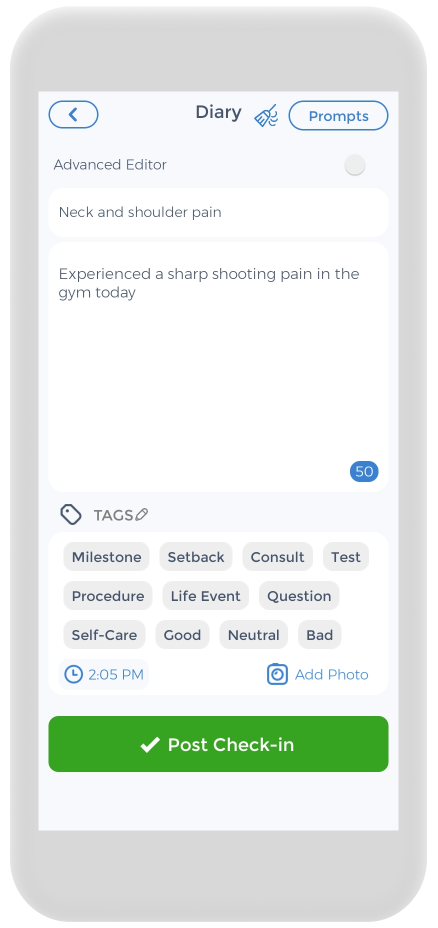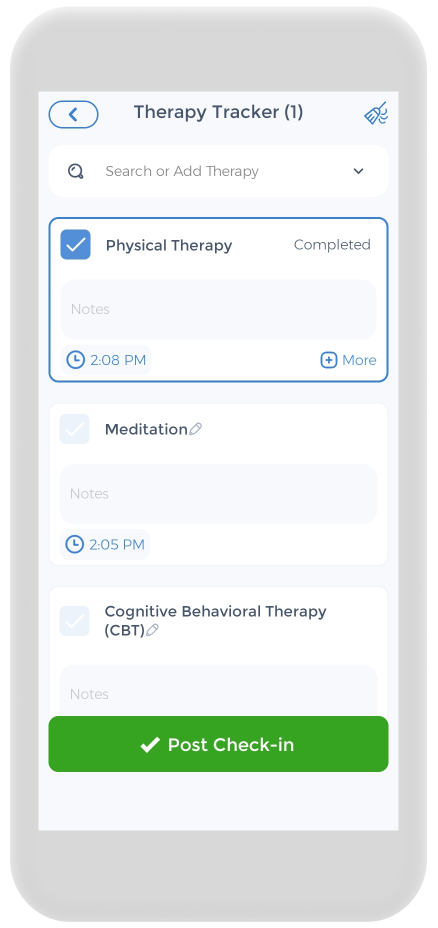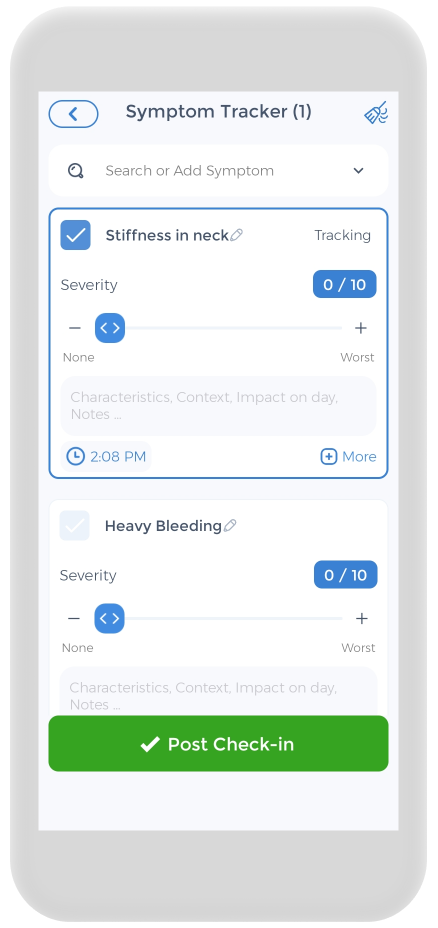
Neck strain is a common condition that can cause discomfort and limited mobility. Whether you’re an athlete, have a physically demanding job, or simply have poor posture, understanding how to treat neck muscle strain is essential. In this article, we will discuss the causes, symptoms, prevention, initial treatment, medical treatments, physical therapy, alternative treatments, and when to seek professional help for neck muscle strain.[1][2][3][4]
Understanding Neck Muscle Strain
Neck strain, also known as a pulled muscle, occurs when the muscles in the neck are overstretched or torn [1]. This can happen due to sudden movements, such as whiplash from a car accident, or repetitive motions from activities like weightlifting or typing for long periods of time. The strain on the muscles can cause pain, stiffness, and limited range of motion.
When it comes to understanding neck strain, it is important to delve deeper into the causes, symptoms, and potential treatments. By gaining a comprehensive understanding of this condition, individuals can take appropriate measures to prevent and manage symptoms of neck muscle strain.
Causes of Neck Muscle Strains
There are several causes of neck injuries, each with its own unique impact on the neck muscles. These causes include:
- Sudden movements or jerking motions: One of the leading causes of neck muscle strain is sudden movements, such as jerking the neck during physical activities or accidents. These abrupt motions can put excessive strain on the neck muscles, leading to injury and discomfort.
- Repetitive motions or overuse of the muscles: Engaging in repetitive motions, such as continuously looking down at a phone or performing repetitive tasks at work, can overwork the neck muscles. Over time, this can result in muscle strain and related symptoms.
- Poor posture: Maintaining poor posture, such as hunching over a desk or looking down at a phone for extended periods, can place undue stress on the neck muscles. This prolonged strain can lead to muscle strain and subsequent discomfort.
- Lack of proper warm-up or stretching: Failing to warm up or stretch adequately before engaging in physical activities can increase the risk of neck muscle strain. Without proper preparation, the muscles may not be adequately prepared for the demands placed upon them, making them more susceptible to strain.
- Car accidents or other traumatic events: Traumatic events, such as car accidents or falls, can cause whiplash injury, a common cause of neck muscle strain. The sudden force and movement involved in these incidents can result in muscle damage and subsequent pain.
Symptoms of Neck Muscle Strain
The symptoms of neck muscle strain can vary in intensity and duration. It is essential to recognize these symptoms to seek appropriate care and treatment. Common symptoms of neck muscle strain include:
symptoms to seek appropriate care and treatment. Common symptoms of neck muscle strain include:
- Pain and tenderness in the neck muscles: Neck muscle strain often presents with localized pain and tenderness. The affected muscles may feel sore and sensitive to touch.
- Stiffness and difficulty moving the neck: Strained neck muscles can lead to neck stiffness and limited range of motion. Individuals may experience difficulty in turning their head or tilting it in certain directions.
- Headaches that radiate from the neck: Neck muscle strain can cause headaches that originate from the neck and radiate to other areas of the head. These headaches can be persistent and may worsen with movement.
- Muscle spasms or cramps in the neck: In some cases, neck muscle strain may result in muscle spasms or cramps. These involuntary contractions can cause additional pain and discomfort.
- Reduced range of motion in the neck: The strain on the neck muscles can lead to a reduced range of motion. Individuals may find it challenging to perform everyday activities that require neck movement, such as looking over their shoulder or tilting their head back.
By recognizing the causes and symptoms of neck muscle strain, individuals can take proactive steps to prevent and manage this condition. It is important to consult with a healthcare professional for an accurate diagnosis and appropriate treatment options.
Prevention of Neck Muscle Strain
While it may not always be possible to prevent neck muscle strain, there are steps you can take to reduce your risk and prevent neck pain:
Neck muscle strain can be a common issue, especially for those who spend long hours sitting at a desk or engaging in repetitive activities. The good news is that there are several preventive measures you can incorporate into your daily routine to minimize the risk of developing this uncomfortable condition.
Regular Exercise and Stretching
Engaging in regular exercise and stretching can help strengthen your neck’s muscles and improve flexibility [2]. It is essential to incorporate exercises that specifically target the neck and upper back to ensure you are effectively preventing strains and injuries.
Neck rotations are an excellent exercise to promote mobility and flexibility in the neck muscles. By gently rotating your head from side to side, you can enhance blood flow to the area and reduce the chances of muscle strain. Another beneficial exercise is shoulder shrugs, which involve lifting your shoulders up towards your ears and then relaxing them back down. This movement helps release tension in the neck and upper back, reducing the risk of strain.
Additionally, chin tucks are a great exercise for strengthening the muscles in the front of your neck. To perform this exercise, simply retract your chin towards your neck while keeping your head level. Hold this position for a few seconds before releasing. Regularly incorporating these exercises into your routine can make a significant difference in preventing neck muscle strain.
Proper Posture and Ergonomics
Maintaining good posture and ergonomics is crucial for preventing neck muscle strain. Poor posture can place unnecessary stress on the muscles and ligaments in your neck, leading to strain and discomfort.
When sitting at a desk, ensure that your workspace is set up in a way that promotes good posture. Position your computer monitor at eye level to prevent straining your neck by constantly looking up or down. Adjust your chair and desk height to maintain a neutral position, where your feet are flat on the floor, and your knees are at a 90-degree angle. Use an ergonomic chair that provides proper support for your back and neck.
Avoid slouching or hunching over while working, as this can strain your neck muscles over time. Instead, sit with your back straight and your shoulders relaxed. Consider using a lumbar roll or a cushion to support the natural curve of your lower back, further promoting good posture.
It is also essential to take regular breaks and gently stretch throughout the day. Stand up, walk around, and perform gentle stretches to alleviate any tension that may have built up in your neck muscles. These simple actions can go a long way in preventing neck muscle strain.[5][6][7][8][9]
Initial Treatment for Neck Muscle Strain
If you have recently strained your neck muscles, there are several initial treatments you can try:
Neck muscle strain, also known as a pulled neck muscle, can be a painful and debilitating condition. It often occurs due to sudden movements, poor posture, or repetitive activities that put strain on the neck muscles. Fortunately, there are several effective initial treatments that can help alleviate your symptoms and promote healing.
Rest and Recovery
Rest is essential for allowing your neck muscles to heal. When you have a neck muscle strain, it is important to avoid activities that exacerbate your symptoms. This includes heavy lifting, strenuous exercise, and any movements that cause pain or discomfort. Give yourself time to recover by taking breaks throughout the day and getting plenty of sleep at night. By allowing your neck muscles to rest, you are giving them the opportunity to heal and regain their strength.
In addition to rest, gentle stretching exercises can also be beneficial for promoting recovery. These exercises should be performed under the guidance of a healthcare professional or a qualified physical therapist. They can help improve flexibility, reduce muscle tension, and prevent future sports injuries too.
Cold and Heat Therapy
Applying cold therapy, such as an ice pack, to the affected area can help reduce pain and inflammation associated with a neck muscle strain. The cold temperature helps constrict blood vessels, which can decrease swelling and numb the area, providing temporary relief. Use a cold pack for 15-20 minutes at a time, several times a day, especially during the first few days after the injury. Remember to always wrap the ice pack in a thin cloth or towel to protect your skin from direct contact with the cold.
After a few days, you can switch to heat therapy to further promote healing. Heat therapy, such as a warm compress or a hot shower, helps increase blood flow to the injured area, which can aid in the recovery process. The warmth also helps relax the muscles, relieving tension and reducing pain. Just like with cold therapy, it is important to use heat therapy for short durations, typically 15-20 minutes at a time, and avoid applying excessive heat directly to the skin.
It is important to note that while cold and heat therapy can provide temporary relief, they should not be used as a substitute for proper medical evaluation and treatment. If your symptoms worsen or persist beyond a few weeks despite these initial treatments, it is recommended to seek medical attention to ensure a proper diagnosis and appropriate management.
Medical Treatments for Neck Muscle Strain
If your symptoms persist or worsen, medical treatments may be necessary. Neck muscle strain, also known as a pulled neck muscle, can be a painful condition that affects your daily activities. It is important to seek appropriate medical care to ensure proper healing and relief from discomfort. Discuss these options with your healthcare provider:
Over-the-Counter Medications
Nonsteroidal anti-inflammatory drugs (NSAIDs), such as ibuprofen or naproxen, can help reduce pain and inflammation associated with neck muscle strain. These medications work by blocking the production of certain chemicals in the body that cause pain and swelling. Follow the recommended dosage instructions and consult your pharmacist if you have any concerns. It is important to note that while NSAIDs can provide temporary relief, they do not address the underlying cause of the muscle strain.
In addition to NSAIDs, your healthcare provider may recommend the use of topical pain relievers, such as creams or gels, which can be applied directly to the affected area. These products often contain ingredients like menthol or capsaicin, which create a cooling or warming sensation to help alleviate pain.
Prescription Treatments
In some cases, your healthcare provider may prescribe muscle relaxants or stronger pain medications to help alleviate your symptoms. Muscle relaxants work by reducing muscle spasms and promoting relaxation, which can help relieve tension in the neck muscles. Stronger pain medications, such as opioids, may be prescribed for severe cases of neck muscle strain. However, it is important to use these medications as directed and only under the supervision of a healthcare professional, as they can have potential side effects and risk of dependency.
In addition to medication, your healthcare provider may recommend other treatments to complement the medical approach. These may include physical therapy, chiropractic care, or acupuncture. Physical therapy can help improve range of motion, strengthen the muscles, and promote healing. Chiropractic care focuses on spinal adjustments and manipulation to alleviate pain and restore proper alignment. Acupuncture, a traditional Chinese medicine practice, involves the insertion of thin needles into specific points on the body to stimulate healing and relieve pain.
It is important to remember that each individual’s case is unique, and the appropriate medical treatment for neck muscle strain may vary. Your healthcare provider will evaluate your specific condition and recommend the most suitable treatment options for you. It is crucial to follow their guidance and attend follow-up appointments to monitor your progress and make any necessary adjustments to your treatment plan.[10][11][12][13][14][15]
Physical Therapy for Neck Muscle Strain
 Physical therapy can be an effective treatment option for neck muscle strain. A physical therapist can design a personalized exercise program to help strengthen your neck muscles and improve flexibility. This can be especially beneficial for individuals who experience frequent neck muscle strains or have chronic neck pain.
Physical therapy can be an effective treatment option for neck muscle strain. A physical therapist can design a personalized exercise program to help strengthen your neck muscles and improve flexibility. This can be especially beneficial for individuals who experience frequent neck muscle strains or have chronic neck pain.
When you first visit a physical therapist for neck muscle strain, they will conduct a thorough evaluation to assess your range of motion, strength, and any areas of tension or pain. Based on this evaluation, they will develop a treatment plan tailored to your specific needs.
Strengthening Exercises
One common physical therapy treatment for neck muscle strain is targeted exercises. These exercises focus on strengthening the neck muscles and improving their endurance. Your physical therapist will guide you through a series of exercises that may include neck stretches, resistance training, and postural exercises. These exercises will not only help alleviate your current symptoms but also prevent future strains by improving the stability and strength of your neck muscles.
During your physical therapy sessions, your therapist will closely monitor your form and technique to ensure that you are performing the exercises correctly. They will also provide modifications or progressions as needed to gradually challenge your muscles and help you reach your goals.
Massage and Manual Therapy
In addition to exercises, your physical therapist may incorporate massage and manual therapy techniques into your treatment plan. These techniques can help relax tense muscles, improve circulation, and alleviate pain. Your physical therapist may use deep tissue massage, trigger point therapy, or myofascial release to target specific areas of tension in your neck.
Massage and manual therapy can also help improve your overall mobility and flexibility. By releasing tight muscles and fascia, these techniques can restore proper movement patterns and reduce restrictions in your neck. Your physical therapist will use their hands or specialized tools to apply pressure and manipulate the soft tissues in your neck, providing relief and promoting healing of muscle tissue.
During these sessions, your physical therapist will communicate with you to ensure that the pressure and techniques used are comfortable for you. They will also provide recommendations for self-care techniques that you can perform at home to complement your in-clinic treatments.
Overall, physical therapy offers a comprehensive approach to treating neck muscle strain. By combining targeted exercises with massage and manual therapy techniques, physical therapists can help you recover from your current injury and prevent future neck strains too. They will also educate you on proper posture and body mechanics to further reduce the risk of re-injury.
If you are experiencing neck muscle strain, consider consulting with a physical therapist to explore the benefits of physical therapy in your recovery process. With their expertise and guidance, you can regain strength, flexibility, and ultimately, a pain-free neck.[16]
Alternative Treatments for Neck Muscle Strain
In addition to traditional medical treatments, there are alternative therapies that may provide relief for neck muscle strain:
Neck muscle strain is a common condition that can cause discomfort and limited mobility. While traditional medical treatments can be effective, some individuals seek alternative therapies to complement their healing process. These alternative treatments focus on holistic approaches to alleviate pain, reduce inflammation, promote healing, and restore balance in the neck muscles.
Acupuncture and Chiropractic Care
Acupuncture and chiropractic care are alternative therapies that have gained popularity in addressing neck muscle strain. These involves the insertion of thin needles into specific points on the body to stimulate the flow of energy and promote healing. Chiropractic care, on the other hand, focuses on spinal adjustments to correct misalignments and relieve pressure on the neck muscles.
Both acupuncture and chiropractic care aim to target specific trigger points or misalignments in the spine to restore balance and alleviate symptoms. These therapies can help reduce pain, improve range of motion, and enhance overall well-being. However, it is important to consult with a qualified practitioner to determine if these treatments are suitable for you. They will assess your condition, medical history, and individual needs to create a personalized treatment plan.
Yoga and Meditation for Pain Management
Yoga and meditation are practices that have been used for centuries to promote physical and mental well-being. When it comes to neck muscle strain, these practices can be beneficial for managing pain and reducing stress associated with the condition.
Yoga offers a variety of gentle poses and stretches that can help stretch and strengthen the neck muscles. These poses focus on proper alignment, relaxation, and breath control, which can aid in relieving tension and promoting healing. Additionally, meditation techniques can be incorporated to calm the mind, reduce anxiety, and enhance the body’s natural healing process.
It is essential to consult with a certified yoga instructor or meditation teacher who specializes in therapeutic practices for neck muscle strain. They will guide you through safe and effective exercises that are tailored to your specific needs and limitations. They can also provide modifications and adjustments to ensure proper alignment and prevent further strain.
Alternative treatments for neck muscle strain can be valuable additions to your overall treatment plan. However, it is crucial to remember that these therapies should not replace medical advice or prescribed treatments. Always consult with your healthcare provider before starting any alternative therapy to ensure it is safe and suitable for your condition.[17][18]
When to Seek Professional Help
While most cases of neck muscle strain can be effectively managed at home, there are situations where you should seek professional help:
Persistent Pain and Discomfort
If your symptoms persist or worsen despite conservative treatment measures, it is important to consult with a healthcare professional. They can assess your condition and recommend further treatment options.
with a healthcare professional. They can assess your condition and recommend further treatment options.
Neck muscle strain can be a frustrating and debilitating condition. The pain and discomfort may interfere with your daily activities and quality of life. While rest, ice, and over-the-counter pain medications can provide temporary relief, sometimes these measures are not enough. If you find that your neck sprain or symptoms are lingering or getting worse, it is crucial to seek professional help.
A healthcare professional, such as a physical therapist or orthopedic specialist, can conduct a thorough evaluation of your condition. They will consider factors such as the severity of your symptoms, your medical history, and any underlying conditions that may be contributing to your neck muscle strain. Based on their assessment, they can recommend a personalized treatment plan to address your specific needs.
Signs of Severe Neck Injuries
If you experience severe pain, numbness, tingling, or weakness in your arms or legs, or if you have difficulty controlling your bowel or bladder function, seek immediate medical attention. These symptoms may indicate a more serious neck injury that requires immediate intervention.
While neck muscle strain is a common condition that often resolves with time and conservative treatment, there are instances where it can be a sign of a more serious injury or underlying problem. If you start experiencing symptoms such as severe pain radiating down your arms or legs, numbness or tingling in your extremities, or weakness in your muscles, it is crucial to seek immediate medical attention.
These symptoms may indicate nerve compression or spinal cord injury, which require prompt evaluation and intervention. Delaying medical treatment in such cases can lead to further complications and long-term damage. A healthcare professional, such as an orthopedic surgeon or neurologist, can perform diagnostic tests such as X-rays, MRI scans, or nerve conduction studies to determine the cause of your symptoms and provide appropriate treatment.[19][20][21]
Using the CareClinic App to Manage Pain
Having a pain diary is crucial for your health, and the CareClinic app can help with that. You can use the app as your health and clinical journal. Just go to the pain diary section of the app and enter your daily symptoms, medications, and other triggers, as they occur. There are also specific sections on the app to track each of these. This can help you be aware of early warning signs. Whether you suffer from chronic low back pain, chronic tension headache, impaired physical and mental functioning, chronic headaches, chronic widespread pain, chronic musculoskeletal pain, chronic neck and shoulder pain, or depressive and anxiety disorders, the app is here to help you improve your chronic pain-related health.
The app also has a medication section where you can precisely track the pain therapies you are undergoing, whether it be superficial heat, spinal manipulation, relaxation therapy, or transcutaneous electrical nerve stimulation. Hopefully, having all this information handy will help you with treating chronic pain conditions.
Sources:
- https://www.ninds.nih.gov/health-information/disorders/pain
- https://painbc.ca/health-professionals/education/OT-workshop
References
- “Neck Strain: Causes and Remedies | Spine-health”. https://www.spine-health.com/conditions/neck-pain/neck-strain-causes-and-remedies
- “Neck Sprains and Strains – OrthoInfo – AAOS”. https://orthoinfo.aaos.org/en/diseases–conditions/neck-sprain/
- “Sports Medicine: Cervical Strain & Sprain | Nationwide Children's Hospital”. https://www.nationwidechildrens.org/conditions/sports-medicine-cervical-strain-and-sprain
- “Neck pain – Diagnosis and treatment – Mayo Clinic”. https://www.akamai.mayoclinic.org/diseases-conditions/neck-pain/diagnosis-treatment/drc-20375587
- “Three Ways to Prevent Neck Pain | University of Utah Health”. https://healthcare.utah.edu/healthfeed/2022/09/three-ways-prevent-neck-pain
- “Spine Health: Posture and Workplace Ergonomics | National Spine Health Foundation”. https://spinehealth.org/article/spine-posture-workplace-ergonomics/
- “Office ergonomic tips to prevent pain | GoHealth Urgent Care”. https://www.gohealthuc.com/library/office-ergonomic-tips-to-prevent-pain
- “3 tips to prevent neck pain – Harvard Health”. https://www.health.harvard.edu/pain/3-tips-to-prevent-neck-pain
- “Reducing Neck and Back Pain at Work | Spine-health”. https://www.spine-health.com/blog/reducing-neck-and-back-pain-work
- “Neck Strain: Causes, Symptoms, and Effective Treatment Options – The Kingsley Clinic”. https://thekingsleyclinic.com/resources/neck-strain-causes-symptoms-and-effective-treatment-options/
- “Conservative Treatment for Neck Pain: Medications, Physical Therapy, and Exercise | Musculoskeletal Key”. https://musculoskeletalkey.com/conservative-treatment-for-neck-pain-medications-physical-therapy-and-exercise/
- “Treatment for Neck Pain”. https://www.spine-health.com/conditions/neck-pain/treatment-neck-pain
- “Say Goodbye to Neck Pain: Find Relief with Acupuncture”. https://www.nybergacupuncture.com/blog/say-goodbye-to-neck-pain-acupuncture
- “Treatments for Neck Pain: Expert Solutions | Atlantic Spine Center”. https://www.atlanticspinecenter.com/blog/v/current-and-prospective-treatments-for-neck-back-pain/
- “Efficacy of Dry Needling and Acupuncture in the Treatment of Neck Pain – PMC”. https://pmc.ncbi.nlm.nih.gov/articles/PMC8314077/
- “Neck Pain Relief: Exploring Manual Therapy Techniques”. https://peakorthopt.com/neck-pain-relief-exploring-manual-therapy-techniques/
- “Acupuncture Actually Works for Neck Pain, Study Says”. https://time.com/4097083/acupuncture-neck-pain/
- “Effects of yoga on chronic neck pain: a systematic review of randomized controlled trials – PMC”. https://pmc.ncbi.nlm.nih.gov/articles/PMC4971133/
- “Neck Pain Explained”. https://www.healthgrades.com/right-care/bones-joints-and-muscles/neck-pain
- “Recognizing Cervical Spine Issues Symptoms – Acibadem Health Point – ACIBADEM Hospitals – Acibadem Health Group”. https://www.acibademhealthpoint.com/recognizing-cervical-spine-issues-symptoms/
- “Why Does My Neck Hurt? A Primer on Neck Pain”. https://centenoschultz.com/why-does-my-neck-hurt/
- “The Use of Symptom Diaries in Outpatient Care | AAFP”. https://www.aafp.org/pubs/fpm/issues/2013/0500/p24.html
- “Electronic diaries for monitoring chronic pain: 1-year validation study – PubMed”. https://pubmed.ncbi.nlm.nih.gov/11275385/
- “Electronic diaries as a tool to improve pain management: is there any evidence?”. https://pubmed.ncbi.nlm.nih.gov/17877520/


